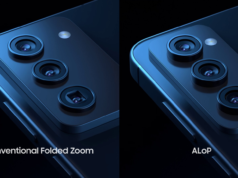The Samsung Galaxy Book 4 Edge stands out as a remarkable entry in the competitive world of laptops, particularly among those utilizing the Qualcomm Snapdragon X Elite processor. Priced starting at $1,349, this laptop is designed for users seeking a lightweight yet powerful machine. It competes directly with models like the Lenovo Yoga Slim 7x, which has garnered praise for its own sleek design and performance.
One of the most notable features of the Galaxy Book 4 Edge is its stunning OLED display. The laptop boasts a 16-inch screen with a resolution of 2,880 x 1,600 pixels and a 120Hz refresh rate, making it ideal for anyone who enjoys consuming media or working on graphic design. The vivid colors and sharp contrasts delivered by the OLED technology make it a standout for watching movies or playing games, although its gaming capabilities are somewhat limited.

| Header Cell – Column 0 | Samsung Galaxy Book 4 Edge (starting) | Samsung Galaxy Book 4 Edge (tested) |
|---|---|---|
| Price | $1,349 | $1,799 |
| Display | 14-inch (2,880 x 1,600) 120Hz AMOLED touch display | 16-inch (2,880 x 1,600) 120Hz AMOLED touch display |
| CPU | Snapdragon X Elite X1E-80-100 | Snapdragon X Elite X1E-84-100 |
| GPU | Qualcomm Adreno GPU | Qualcomm Adreno GPU |
| RAM | 16GB | 16GB |
| Storage | 512GB | 1TB |
| Ports | 2x USB-C, 1x HDMI, 1x USB-A, 1x microSD, 1x headphone jack | 2x USB-C, 1x HDMI, 1x USB-A, 1x microSD, 1x headphone jack |
| Connectivity | Wi-Fi 7, Bluetooth 5.3 | Wi-Fi 7, Bluetooth 5.3 |
| Dimensions | 12.3 x 8.8 x 0.4 inches | 13.9 x 9.8 x 0.4 inches |
| Weight | 2.6 pounds | 3.4 pounds |
The Galaxy Book 4 Edge is not just another laptop; it aims to offer a compelling blend of performance, design, and display quality. With its sleek aesthetics and powerful internals, it has captured the attention of tech enthusiasts and professionals alike, positioning itself as a strong contender in the premium laptop market.
Display Quality
The 16-inch OLED panel of the Samsung Galaxy Book 4 Edge is one of its most striking features. With its sharp visuals and rich color reproduction, this display elevates the user experience to new heights. The resolution of 2,880 x 1,600 pixels ensures that images appear crisp and detailed, whether you’re streaming a movie or editing photos. Coupled with a 120Hz refresh rate, this laptop provides smooth motion and responsiveness, making it a joy for users who engage in activities requiring quick visuals.
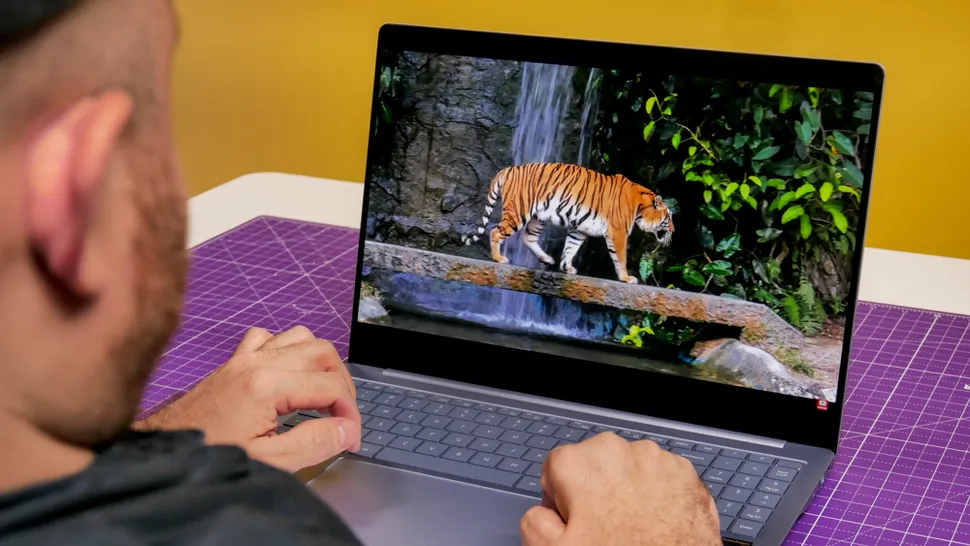
The quality of the display shines through in various settings, whether you’re working indoors or outdoors. The brightness levels are impressive, making it easy to view content even in well-lit environments. The contrast ratio is exceptional, allowing dark colors to appear deep while bright colors pop, enhancing the overall viewing experience.
For anyone who frequently watches videos or engages in graphic work, the Galaxy Book 4 Edge’s display will not disappoint. The colors are vibrant, and the details are striking, making it an ideal choice for media consumption. However, while the display excels in terms of visual quality, it is worth noting that users seeking high-performance gaming should consider the laptop’s overall performance capabilities, which will be discussed later.
| Header Cell – Column 0 | Samsung Galaxy Book 4 Edge | MacBook Pro 14-inch M3 |
|---|---|---|
| Nits (brightness) | 387.2 (SDR) | 516 (HDR) | 558 (SDR) | 1125 (HDR) |
| sRGB | 114.5% | 114.8% |
| DCI-P3 | 81.1% | 81.3% |
| Delta-E | 0.19 | 0.12 |
The display quality of the Samsung Galaxy Book 4 Edge sets a high standard, making it one of the most compelling reasons to choose this laptop. Whether for entertainment, work, or creative pursuits, the vibrant OLED panel is likely to impress even the most discerning users.
Design and Connectivity
The Samsung Galaxy Book 4 Edge showcases a sleek and modern design that prioritizes portability without compromising functionality. Measuring at just 13.9 x 9.8 x 0.4 inches and weighing in at 3.4 pounds, this laptop is incredibly lightweight for a 16-inch model. Its slim profile makes it easy to slip into a backpack or carry by hand, making it an excellent choice for professionals on the go.
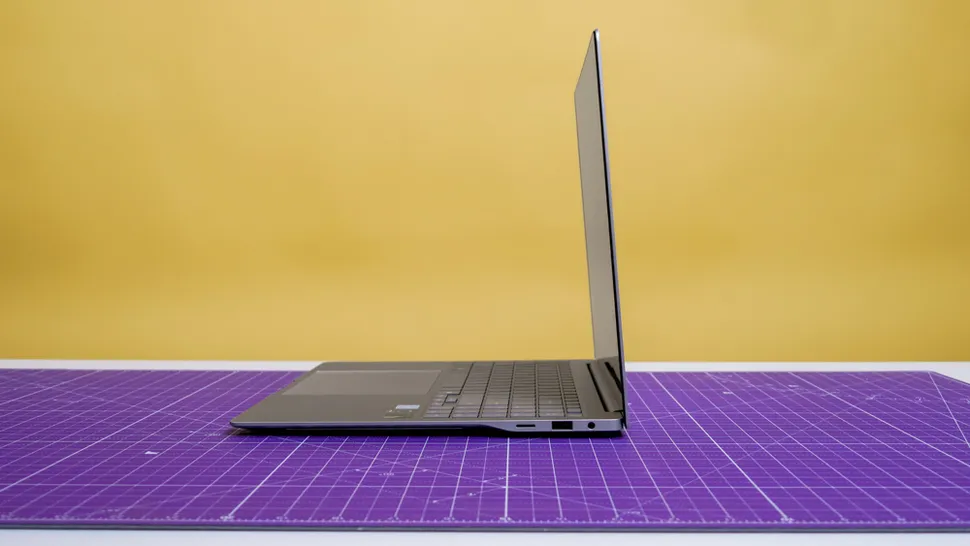
The build quality is also noteworthy, with a sturdy aluminum chassis that provides durability without adding unnecessary bulk. The smooth surface not only looks attractive but also feels nice to the touch, enhancing the overall user experience. In addition to its aesthetic appeal, the laptop features a full-size keyboard that is comfortable to type on.
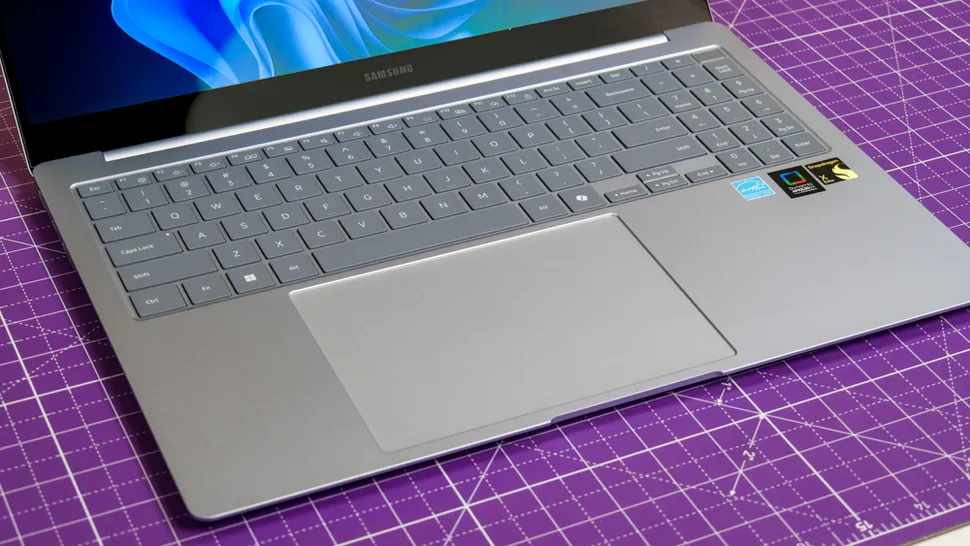
The keys are responsive with a pleasant tactile feel, making long typing sessions less tiresome. The large touchpad is equally impressive, accurately capturing gestures and enhancing navigation.
Connectivity options are abundant, allowing users to connect a variety of peripherals without hassle. The laptop comes equipped with a rich selection of ports, including USB-A, USB-C, HDMI, microSD, and a headphone jack. This ensures that users can easily connect to external displays, transfer files, or connect legacy devices without needing adapters. While the inclusion of a second USB-C port could have offered more flexibility for charging, the existing selection is more than adequate for everyday use.
In summary, the design and connectivity features of the Galaxy Book 4 Edge contribute to its appeal as a portable, user-friendly laptop.
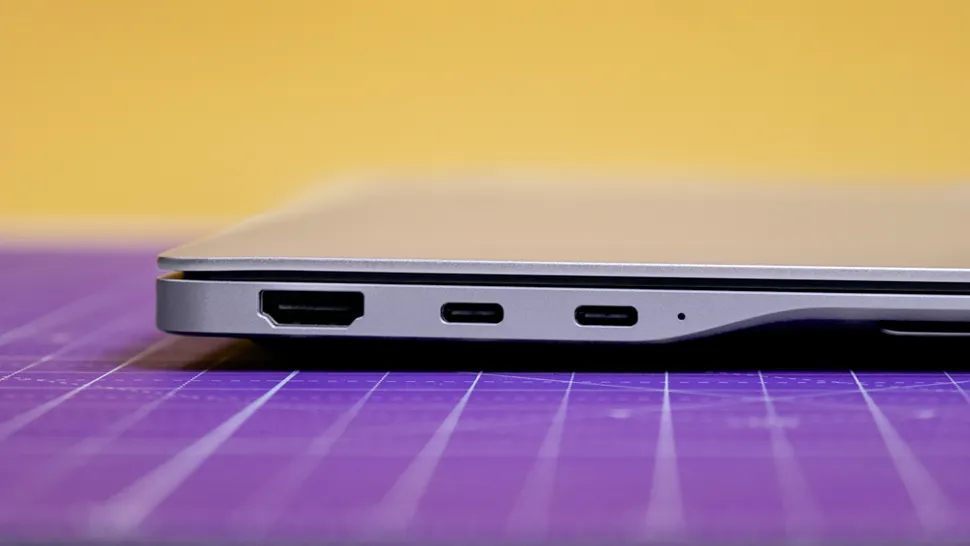
Its lightweight build, comfortable keyboard, and versatile port selection make it a strong contender for anyone in need of a reliable device for both work and leisure.
Processing Power
Under the hood, the Samsung Galaxy Book 4 Edge is powered by the Snapdragon X Elite X1E-84-100 processor, which promises impressive performance for a range of computing tasks. This processor, combined with 16GB of RAM and a 1TB SSD in the reviewed model, allows the laptop to handle everyday tasks with ease. Users can expect smooth performance when browsing the web, processing documents, or engaging in light photo editing, making it suitable for both professional and personal use.
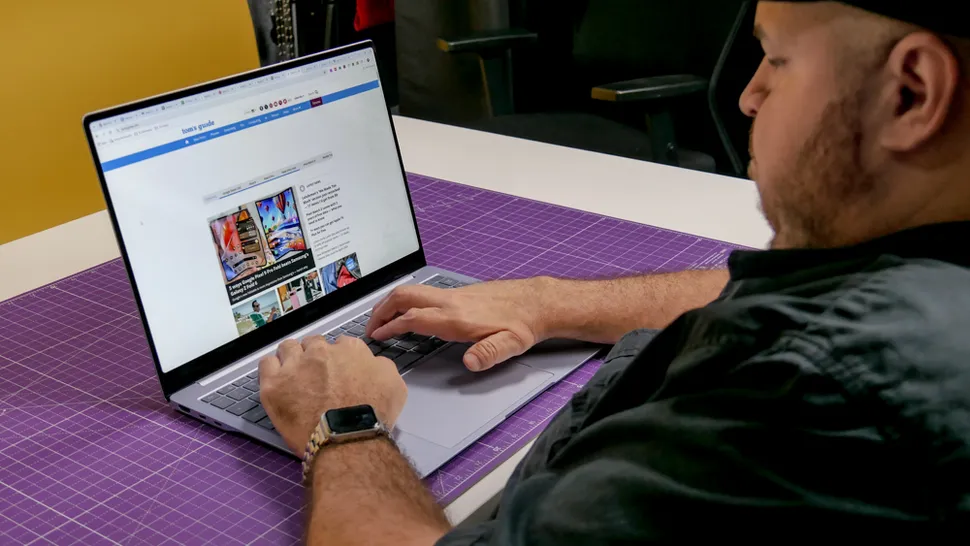
In real-world scenarios, the Galaxy Book 4 Edge shines during multitasking sessions. With over 30 tabs open and streaming videos simultaneously, the laptop maintains its composure without significant slowdowns. This level of performance is comparable to some high-end laptops, demonstrating that Qualcomm’s Snapdragon X Elite processor is a formidable competitor in the market. However, it’s important to note that while the laptop excels at basic tasks, it falls short in high-end gaming. During performance tests, games like Civilization VI struggled to achieve playable frame rates, indicating that users looking for a gaming machine might want to consider alternatives.
| Header Cell – Column 0 | Samsung Galaxy Book 4 Edge | MacBook Pro 14-inch M3 | Dell XPS 14 (2024) |
|---|---|---|---|
| Geekbench 6 (single-core/multi-core) | 2,935 / 15,818 | 3,163 / 11,968 | 2,326 / 12,701 |
| Handbrake (video transcode) | 4:51 | 5:38 | 5:49 |
Additionally, the laptop does tend to get warm during extended use, with temperatures reaching around 112 degrees on the underside. While this isn’t uncommon for laptops, users should be mindful of its temperature and ideally keep it on a flat surface for better airflow.
Overall, the processing power of the Samsung Galaxy Book 4 Edge makes it a competent choice for daily tasks, though its gaming capabilities are limited. Users seeking a laptop for general productivity will find it more than adequate, but those with heavy gaming or intensive processing needs may want to look elsewhere.
Battery Efficiency
When it comes to battery efficiency, the Samsung Galaxy Book 4 Edge presents a mixed bag. Despite its impressive specs and features, the battery life does not quite measure up to some of its competitors, such as the Dell XPS 13 and HP OmniBook X. In continuous web browsing tests, the laptop managed to last 9 hours and 56 minutes, which is decent but pales in comparison to other models in its class. For users who require all-day battery performance, this may be a drawback.
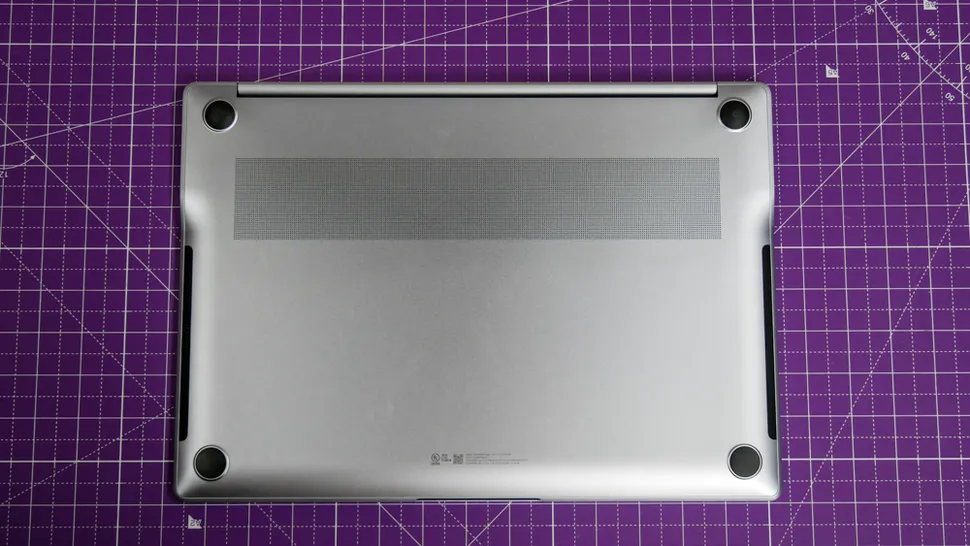
The relatively short battery life can be attributed to several factors, including the large 16-inch OLED display and the power-hungry Snapdragon X Elite processor. While these components contribute to the laptop’s impressive performance and display quality, they also demand significant power, ultimately affecting longevity. Users who frequently travel or work remotely may find themselves needing to recharge more often than they would like, especially during long work sessions.
For many, the battery life may still be sufficient for daily tasks such as browsing, word processing, and streaming videos. However, if you’re someone who needs a laptop that can last through a full workday without a charge, the Galaxy Book 4 Edge might not be your best option. In fairness, the laptop’s performance and display capabilities could justify the trade-off for some users.
| Header Cell – Column 0 | Time (hours:mins) |
|---|---|
| Samsung Galaxy Book 4 Edge | 9:56 |
| HP OmniBook X | 16:22 |
| Dell XPS 13 (2024) | 20:51 |
In conclusion, while the Galaxy Book 4 Edge offers commendable features and functionality, its battery efficiency leaves something to be desired. Those prioritizing longevity in their laptop choices may want to consider other options that provide better battery performance without sacrificing too much in terms of processing power and display quality.
AI Capabilities
The Samsung Galaxy Book 4 Edge was marketed as a Copilot+ PC, which means it is equipped with AI capabilities designed to enhance the user experience. However, the reality is that these AI features may not live up to expectations. Users looking for advanced functionality might find themselves disappointed with the limited applications and features available on the device.
The primary issue lies in the app compatibility for certain popular software. For example, programs like Adobe Premiere, After Effects, and even the desktop version of Google Drive cannot run on this Snapdragon-powered laptop due to compatibility issues. This could be a dealbreaker for users who rely on these applications for work or creative projects. While casual users may not encounter significant issues with standard web browsing and media consumption, professionals looking for a fully functional workstation may need to look elsewhere.
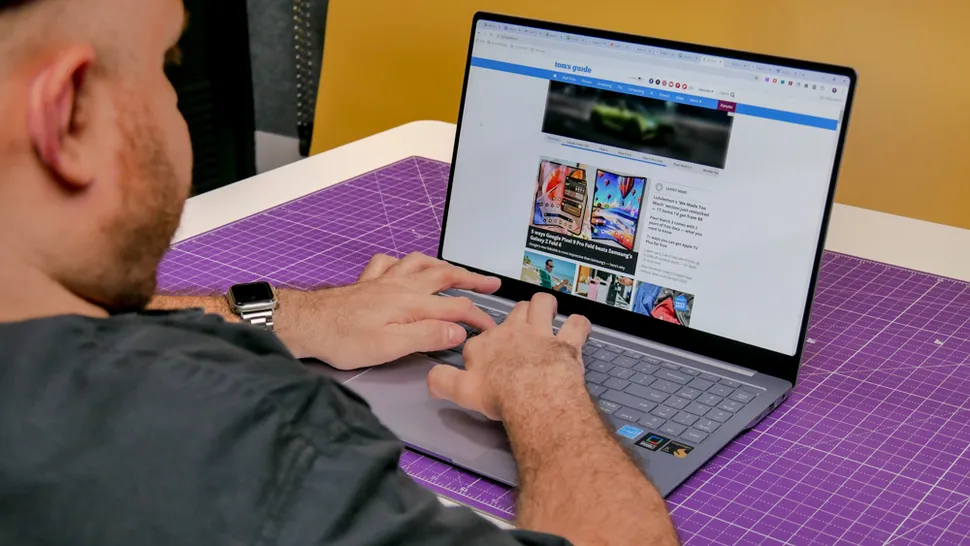
Furthermore, the AI features that are present tend to be underwhelming. While the new Cocreator function in MS Paint may offer some fun and engaging ways to improve sketches, it doesn’t provide enough practical utility to be a compelling reason to choose this laptop. The lack of robust AI capabilities may leave users feeling that they are not getting the full value of the Copilot+ designation.
In summary, while the Samsung Galaxy Book 4 Edge is equipped with some AI features, they are not as impactful or useful as one might hope. Users seeking advanced functionality or extensive software compatibility should carefully consider whether this laptop meets their needs, as the AI capabilities fall short of expectations.
Performance Benchmarks
In the realm of performance benchmarks, the Samsung Galaxy Book 4 Edge demonstrates competitive capabilities when compared to other high-end laptops like the MacBook Pro M3 and Dell XPS 14. In Geekbench 6 tests, the Galaxy Book 4 Edge achieved respectable scores in both single-core and multi-core performance. This indicates that while it may not outperform all competitors, it holds its ground effectively in many scenarios.
When it comes to video editing tasks, the Galaxy Book 4 Edge showcases its prowess. In the Handbrake video transcode test, which involves converting a 4K video to 1080p, the Galaxy Book 4 Edge completed the task faster than both the MacBook Pro 14-inch M3 and Dell XPS 14. This performance is particularly impressive given the laptop’s Snapdragon X Elite processor, proving that it can handle demanding workloads despite its ARM architecture.

However, it’s essential to keep in mind that the laptop struggles with high-performance gaming. The performance for games like Civilization VI and Shadow of the Tomb Raider left much to be desired, with frame rates well below acceptable standards for a gaming laptop. This makes the Galaxy Book 4 Edge more suitable for general productivity tasks and media consumption rather than high-end gaming.
In conclusion, the Samsung Galaxy Book 4 Edge fares well in performance benchmarks, especially for tasks like video editing and multitasking. However, for those prioritizing gaming or AI-driven workflows, there are more suitable options available on the market.
Advantages and Drawbacks
When evaluating the Samsung Galaxy Book 4 Edge, several advantages and drawbacks come to the forefront. One of the major selling points is the stunning 16-inch OLED display, which offers crisp visuals and vibrant colors, making it a joy for content creators and media enthusiasts. The laptop’s slim and lightweight design also makes it highly portable, ideal for professionals who are constantly on the move. Additionally, the keyboard and touchpad provide a comfortable user experience, which is crucial for long typing sessions.
On the downside, the Galaxy Book 4 Edge struggles with software compatibility due to its Snapdragon X Elite processor. Programs like Adobe Premiere and Google Drive may not work as expected, limiting the laptop’s usefulness for professionals relying on those applications. The AI features, while present, are also underwhelming and don’t offer enough value to justify the premium price tag.

The battery life is another point of concern. At just under 10 hours, it falls behind competitors like the Dell XPS 13, which can last much longer on a single charge. This might be a dealbreaker for users who prioritize battery efficiency over display and processing power.
In summary, the Samsung Galaxy Book 4 Edge offers a combination of strong advantages and notable drawbacks. For users seeking a laptop with an excellent display, sleek design, and good performance for general tasks, this is a solid option. However, those who need extensive software compatibility or long-lasting battery life may want to consider alternatives.
Conclusion and Verdict
The Samsung Galaxy Book 4 Edge is a laptop that excels in certain areas, particularly its stunning OLED display and sleek, lightweight design. For users who value aesthetics and media consumption, this laptop is a strong contender. The Snapdragon X Elite processor ensures smooth performance for everyday tasks, and the comfortable keyboard and touchpad make it a great choice for professionals who type a lot.
However, the laptop is not without its flaws. The limited software compatibility, underwhelming AI features, and below-average battery life are significant drawbacks that may turn away potential buyers. In particular, users who rely on specific software like Adobe or need long battery life for travel may find this laptop lacking.
For those who prioritize display quality and typing experience, the Samsung Galaxy Book 4 Edge is a worthwhile option. However, users who need better battery life and more robust software support might prefer alternatives like the Lenovo Yoga Slim 7x. Ultimately, the Galaxy Book 4 Edge is a well-rounded device with both its strengths and weaknesses, appealing to specific types of users depending on their needs.




